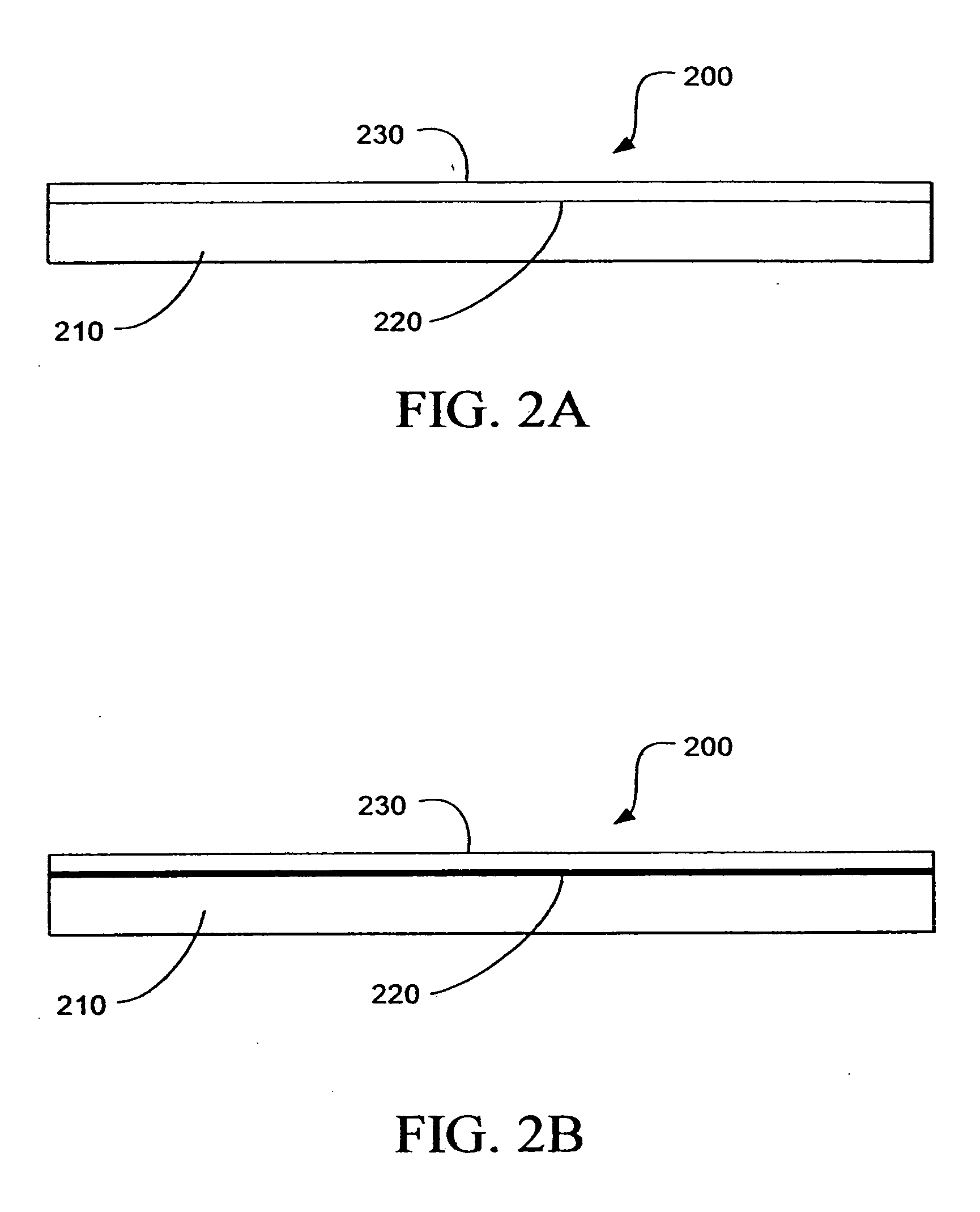Directory read inhibitor for optical storage media
a technology of optical storage media and inhibitors, applied in the field of optical media, can solve problems such as rendering the disk unplayable, and achieve the effect of reducing the number of times of the disk
- Summary
- Abstract
- Description
- Claims
- Application Information
AI Technical Summary
Benefits of technology
Problems solved by technology
Method used
Image
Examples
example 1
[0202] Referring to FIGS. 1a-1b, edge views of an optical disk 100 with a pseudo-transmissive read inhibitor are shown. The optical disk 100 includes a substrate 110, a reflective layer 120 and a lacquer layer 130. FIG. 1a shows the optical disk 100 in a first state wherein the substrate 110 is substantially optically transmissive. FIG. 1b shows the optical disk 100 in a second state wherein the substrate is substantially optically non-transmissive. The transformation from the first state to the second state is at-least-in-part a function of time from an initializing event, in this particular example, the opening of a substantially gas impermeable membrane (not shown) that encloses the optical disk 100 while it is packed, shipped and sold.
example 2
[0203] Referring to FIGS. 2a-2b, edge views of an optical disk 200 with a pseudo-reflective read inhibitor are shown. The optical disk 200 includes a substrate 210, a data encoded component 220 and a lacquer layer 230. In this example, the data encoded component 220 is a thin film of metal. FIG. 1a shows the optical disk 200 in a first state wherein the data encoded component 220 is substantially optically reflective. FIG. 1b shows the optical disk 200 in a second state wherein the data encoded component 220 is substantially optically non-reflective. As in the first example, the transformation from the first state to the second state is at-least-in-part a function of time from an initializing event, in this second example, the opening of a substantially air tight laminated polymeric container (not shown) that encloses the optical disk 200 while it is packed, shipped and sold.
Practical Applications of the Invention
[0204] A practical application of the invention that has value withi...
PUM
| Property | Measurement | Unit |
|---|---|---|
| diameter | aaaaa | aaaaa |
| thickness | aaaaa | aaaaa |
| thickness | aaaaa | aaaaa |
Abstract
Description
Claims
Application Information
 Login to View More
Login to View More - R&D
- Intellectual Property
- Life Sciences
- Materials
- Tech Scout
- Unparalleled Data Quality
- Higher Quality Content
- 60% Fewer Hallucinations
Browse by: Latest US Patents, China's latest patents, Technical Efficacy Thesaurus, Application Domain, Technology Topic, Popular Technical Reports.
© 2025 PatSnap. All rights reserved.Legal|Privacy policy|Modern Slavery Act Transparency Statement|Sitemap|About US| Contact US: help@patsnap.com



